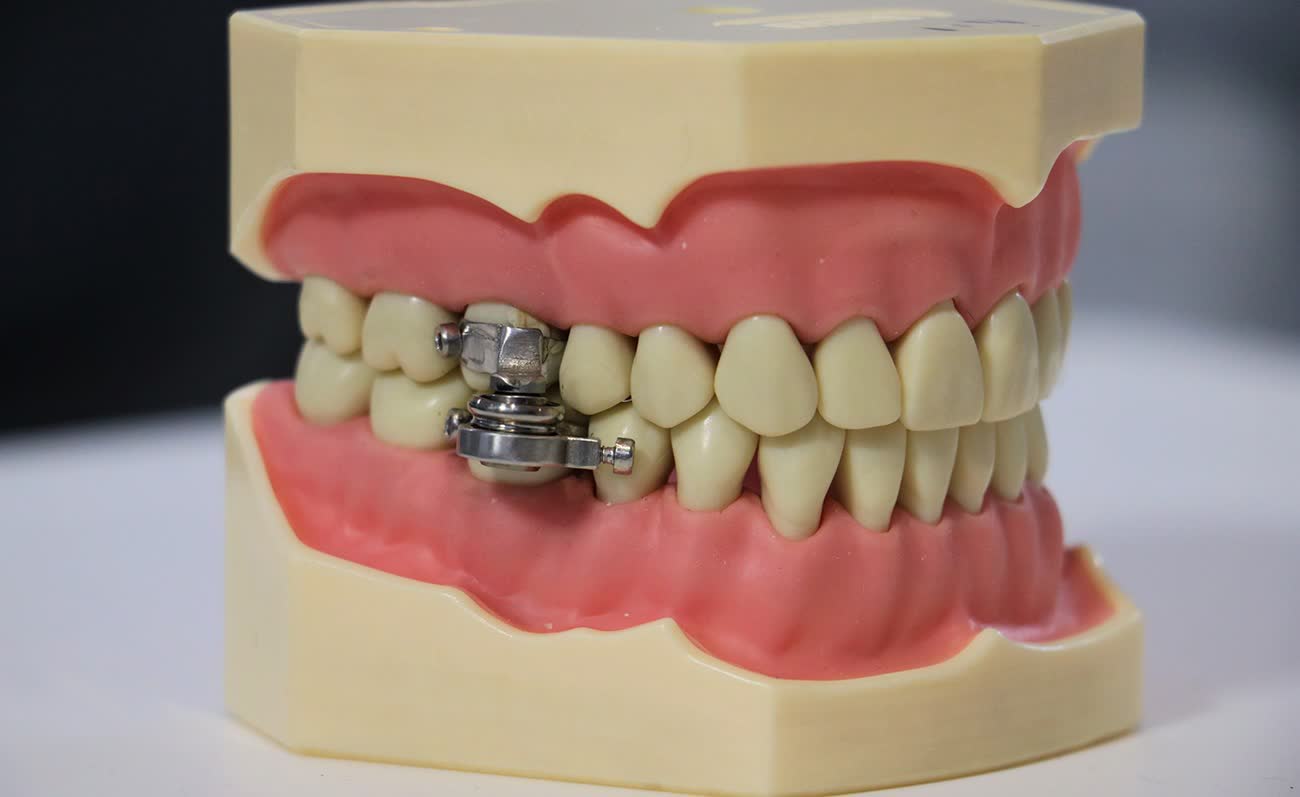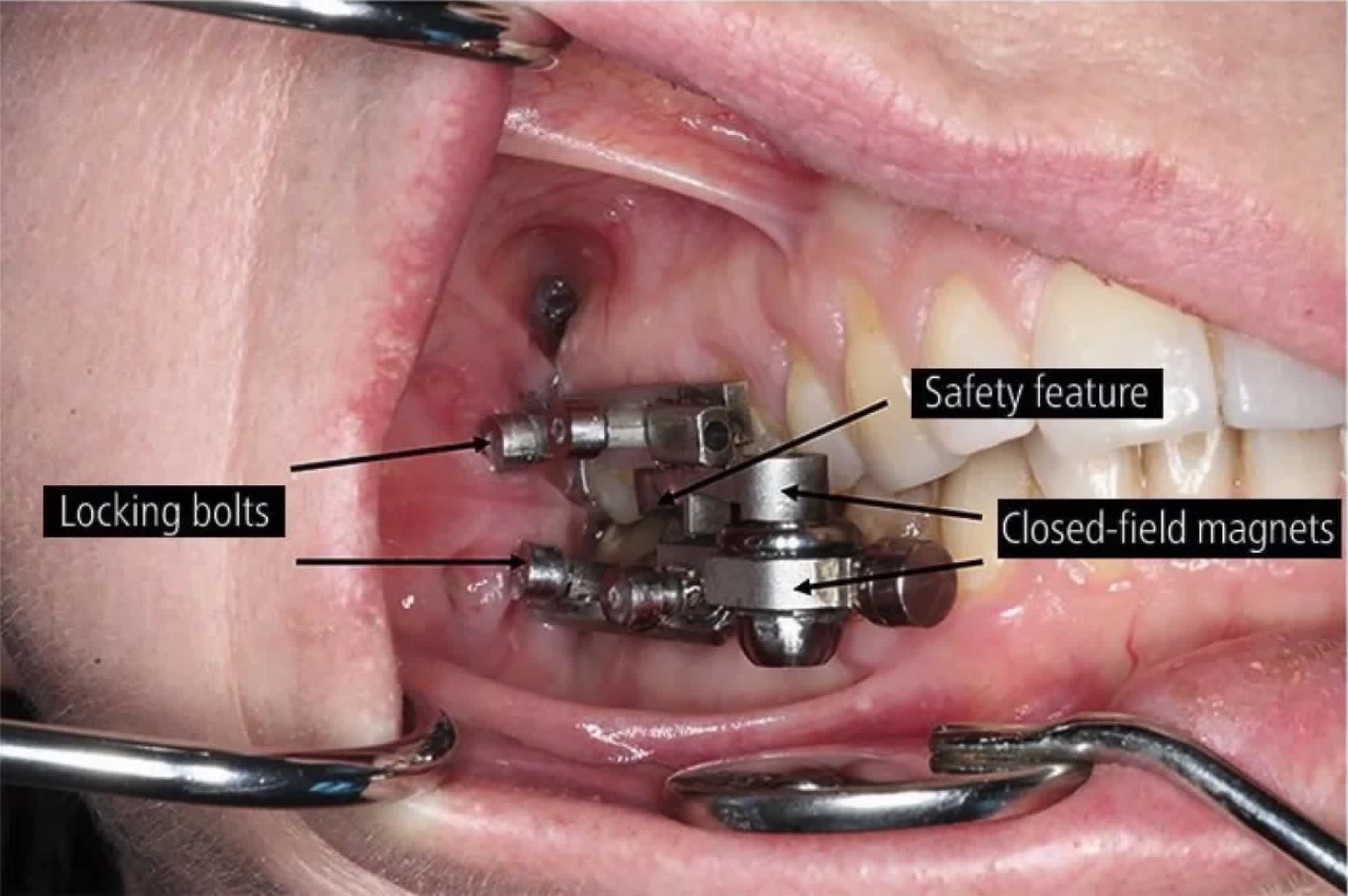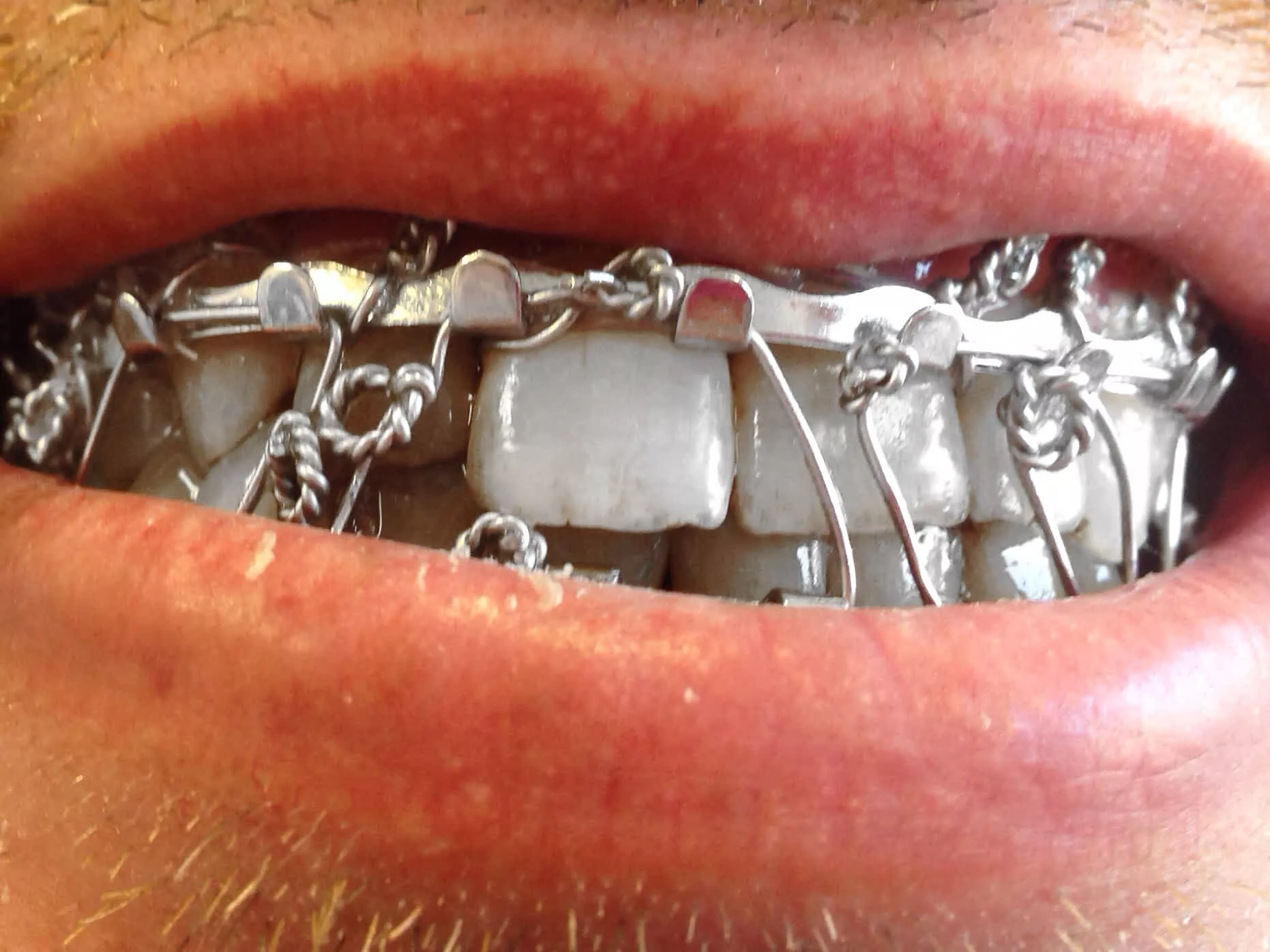In context: Things that were popular in the 80s often make a comeback---fashions, He-Man, retro consoles---but some are less welcome than others, such as the threat of global nuclear war. Something else that was surprisingly common during the decade was wiring people's jaws shut so they could lose weight, and now it's back, albeit in a much less horrifying form.
Researchers from the University of Otago and the UK have partnered on a weight-loss device called the DentalSlim Diet Control, which keeps wearers on a liquid-only diet by preventing them from opening their mouths wider than 2 mm (0.07 inches).
Unlike the old-fashioned method of wires attached to implants or braces, which is still occasionally used today for dieting purposing as well as fractures, DentalSlim features "magnetic devices and custom-manufactured locking bolts." It is attached to the first molars with orthodontic cement by a professional, and wearers get cheek protectors made from silicone to stop their mouths being cut to pieces while it's in place, which is good.
Researchers say the DentalSlim doesn't interfere with a wearer's breathing or speech and is less invasive and dangerous than the previous method of jaw wiring, which often led to gum disease, permanent jaw movement restrictions, and even psychiatric conditions.
One of the worst elements of the previous method of jaw wiring was the choking risk if a user vomited. The DentalSlim avoids this danger by providing users with an unlocking tool they carry with them at all times. It may seem an easy way for wearers to cheat, but no participant from a recent study reported having used this key. Those taking part in the trial lost an average of 6.36kg (14 pounds) in two weeks.
"The beauty of it is that once patients are fitted with the device, after two or three weeks they can have the magnets disengaged. They could then have a period with a less restricted diet and then go back into treatment," said Lead researcher, University of Otago Health Sciences Pro-Vice-Chancellor, Professor Paul Brunton.
"It is a non-invasive, reversible, economical and attractive alternative to surgical procedures."
Thanks, New Atlas


